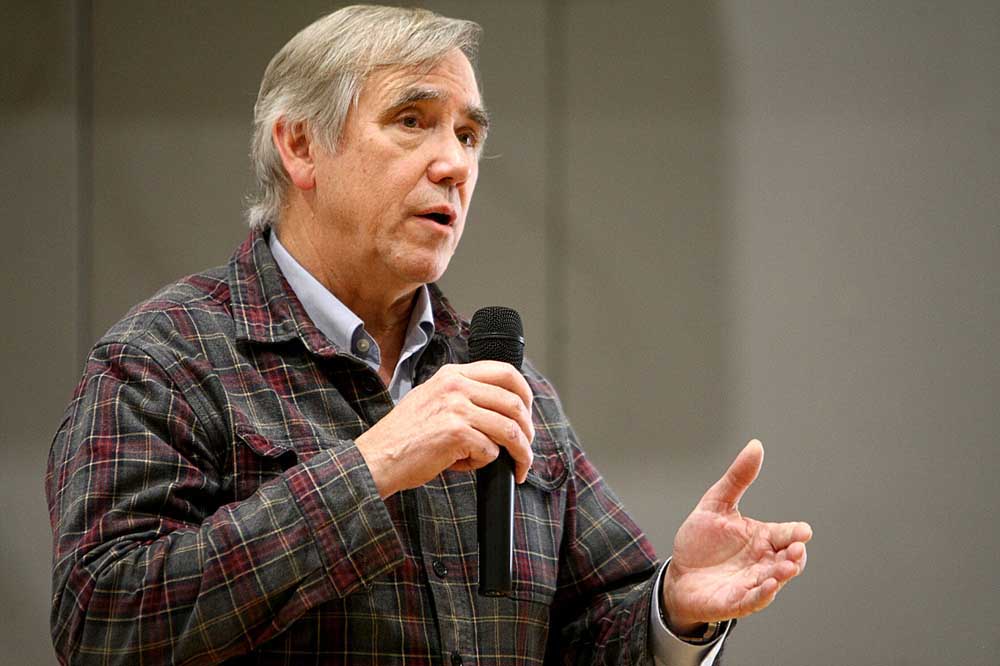Capital Chatter: How close is the race for governor?
Published 8:00 am Thursday, September 27, 2018

- Capital Chatter: Dangerous times for the Oregon Legislature
How close is Oregon’s race for governor? Consider these indicators:
Predictions: Rep. Knute Buehler’s campaign trumpeted the news that Real Clear Politics switched the race prediction from “leans Democratic” to “tossup.”
Trending
Money: Gov. Kate Brown continues her ginormous lead in fundraising and is on pace to break the record for an Oregon gubernatorial candidate. The fact that Democratic and “progressive” donors are pouring so much money into Brown’s campaign is a signal that they’re worried.
Money doesn’t guarantee victory. Democrat John Kitzhaber won in 2010 despite being outspent by Republican Chris Dudley, who raised nearly $10.5 million, soon to be eclipsed by Brown. Dudley later left the state.
In a “confidential” fundraising email to supporters this week, Buehler’s campaign wrote, “According to our most recent estimates, the battle for governor comes down to 295,250 voters.” The campaign said it needed $1,200,435 to reach those voters.
Soon the number of supposedly unreached voters was down to 145,823 in Portland, 45,054 in Eugene, 19,081 in Medford, 3,812 in Bend, 573 in Lincoln City and 254 in Baker City.
It was a catchy approach, making it appear supporters were getting an inside scoop; however, not all the recipients were pleased. As one Capital Chatter reader said in forwarding a campaign email to me, “I think it’s really funny that he’s sending spam marked ‘confidential.'”
Accessibility: At the end of summer, Brown launched weekly conference calls with Oregon journalists. She did several, then stopped. This week’s Legislative Days at the Oregon Capitol would have been a good time for a press conference or media availability. There was none. Buehler has been doing more conference calls with the media.
Trending
Support and disdain: Massachusetts Sen. Elizabeth Warren, beloved by Democratic progressives, officially endorsed Brown. Campaign surrogates, such as the Oregon Education Association and the Planned Parenthood PAC of Oregon, stepped up attacks on Buehler.
Retiring state Rep. Bill Kennemer, R-Oregon City, launched what he said was an independent expenditure campaign against Brown. A one-minute commercial criticizes her for vetoing Kennemer’s bipartisan legislation that would have allowed psychologists to prescribe drugs for mental health treatment. (The issue of whether non-physicians can prescribe medication is a long-running dispute in legislatures. One of the worst editorials I wrote, back in the 1990s, was one that picked sides between ophthalmologists and optometrists.)
News of the week: The Democratic Party of Oregon headlined a press release, “ICYMI: It’s been a bad week for Knute Buehler.” (Tip: “ICYMI” stands for “in case you missed it.”)
The supposed bad news was divided into several sections:
• “Is Knute Buehler telling anti-abortion voters one thing and telling the rest of Oregon another thing? It sure looks like it.”
• “Pressure is also mounting for Buehler to finally speak out against flawed U.S. Supreme Court nominee Brett Kavanaugh.”
• “And Buehler’s ties to dark money corporate interests are showing.”
“Knute’s News,” Buehler’s weekly newsletter to supporters, had a different take, including:
• Monday, Buehler thanked campaign volunteers. The second part of a candidate profile about him was published in the Bend Bulletin.
• Tuesday, he was endorsed by a Medal of Honor recipient, retired Army Master Sgt. Leroy A. Petry.
• Wednesday, he spoke to the Albany Chamber Membership Forum.
• Thursday, his campaign launched a new ad. He spoke at the Washington County Reagan Dinner.
• Friday, his visit to Albany was covered by the Corvallis Gazette-Times.
This week, Brown’s campaign also launched a new ad, claiming “Oregonians can’t trust Knute Buehler with our schools.”
Coming up: The first gubernatorial debate is Tuesday and young people will ask the questions. Children First for Oregon, Pamplin Media Group and KOIN-TV are presenting the 7 p.m. debate at Roosevelt High School.
The “Debate for Oregon’s Future” will feature the three major-party candidates for governor: Democrat Brown, Republican Buehler and Independent Patrick Starnes.
Children First for Oregon, the founding sponsor, solicited applications from children and youth who were interested in participating.
Portlanders asking the questions will be Jeremy Clark, 14; Shimon Dasgupta, 16; Genesis Gomez, 12; Rose Lawrence, 15; Deja Presseur, 16; Viktoria Rosqvist, 19; Ja Neciya Ross, 15; Adi Solomon, 15; and Tosha Kitungano, 17.
Other participants will be Olivia Cooper, 17, Prineville; Brian Josephson, 18, Medford; McKeely Miller, 17, John Day; Sal Najjar, 16, Tigard; Kai Schrosk, 15, Colton; Justin Thach, 17, Salem; and Dazon Sigo, 17, Pendleton.
Jeff Gianola of KOIN and John Schrag of Pamplin Media Group conducted a training session with them last weekend.
This may be the only debate that includes people east of the Cascades. Brown dismissed Buehler’s suggestion of having two debates in each of Oregon’s five congressional districts. She agreed to only two other debates, Oct. 4 in Medford and Oct. 9 in Portland.
Voters: Independent-minded voters will determine the outcome. As of last month, 2,706,777 Oregonians were registered to vote, a 3 percent increase from July. They included 958,884 Democrats, 700,368 Republicans, 120,989 Independent Party members and, most important, 863,118 who did not choose a party affiliation. The remaining voters were registered with minor parties.
The number of voters ranges from 522,409 in Multnomah County to 997 in Wheeler County.
To see more voter statistics and state information about the Nov. 6 General Election, go to oregonvotes.org.
Dick Hughes, who writes the weekly Capital Chatter column, has been covering the Oregon political scene since 1976. Contact him at TheHughesisms@Gmail.com, Facebook.com/Hughesisms, YouTube.com/DickHughes or Twitter.com/DickHughes.





